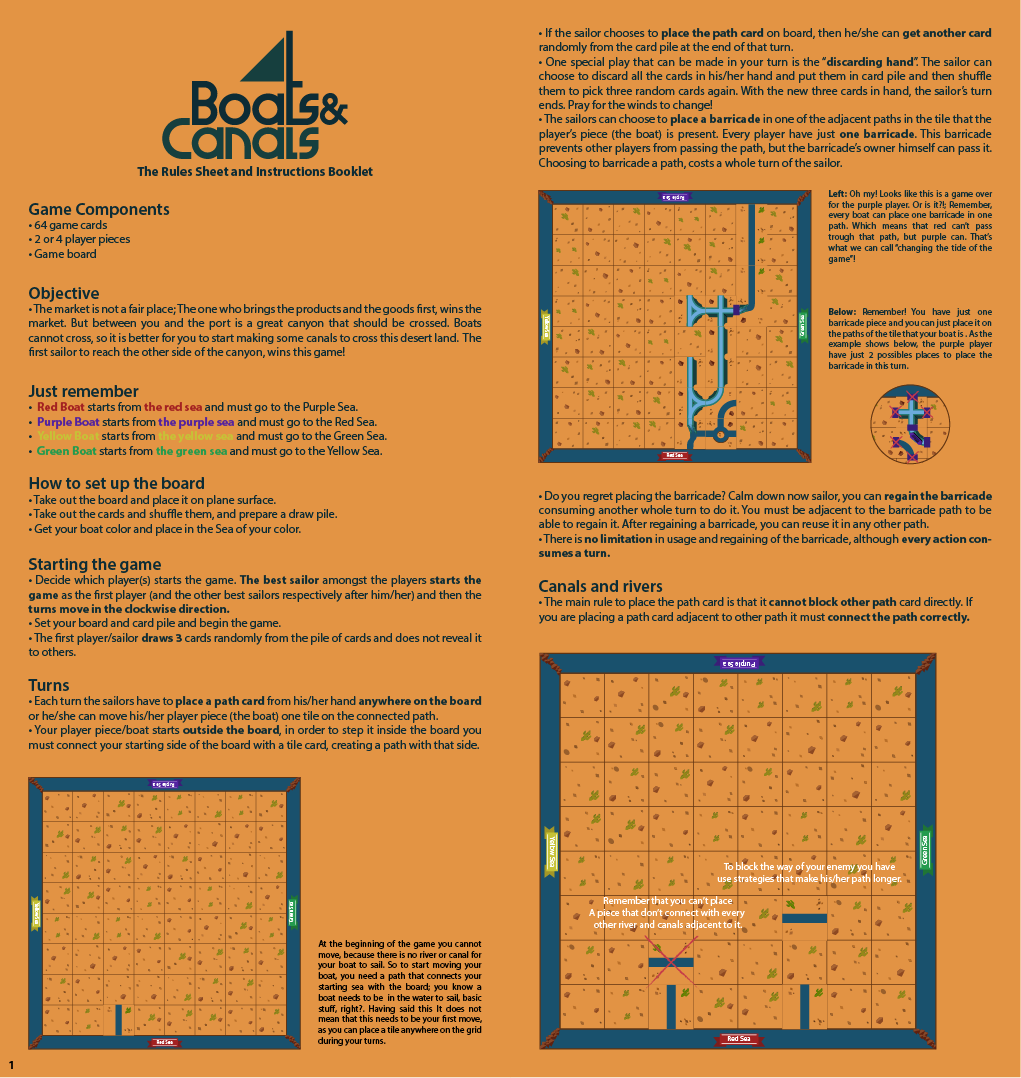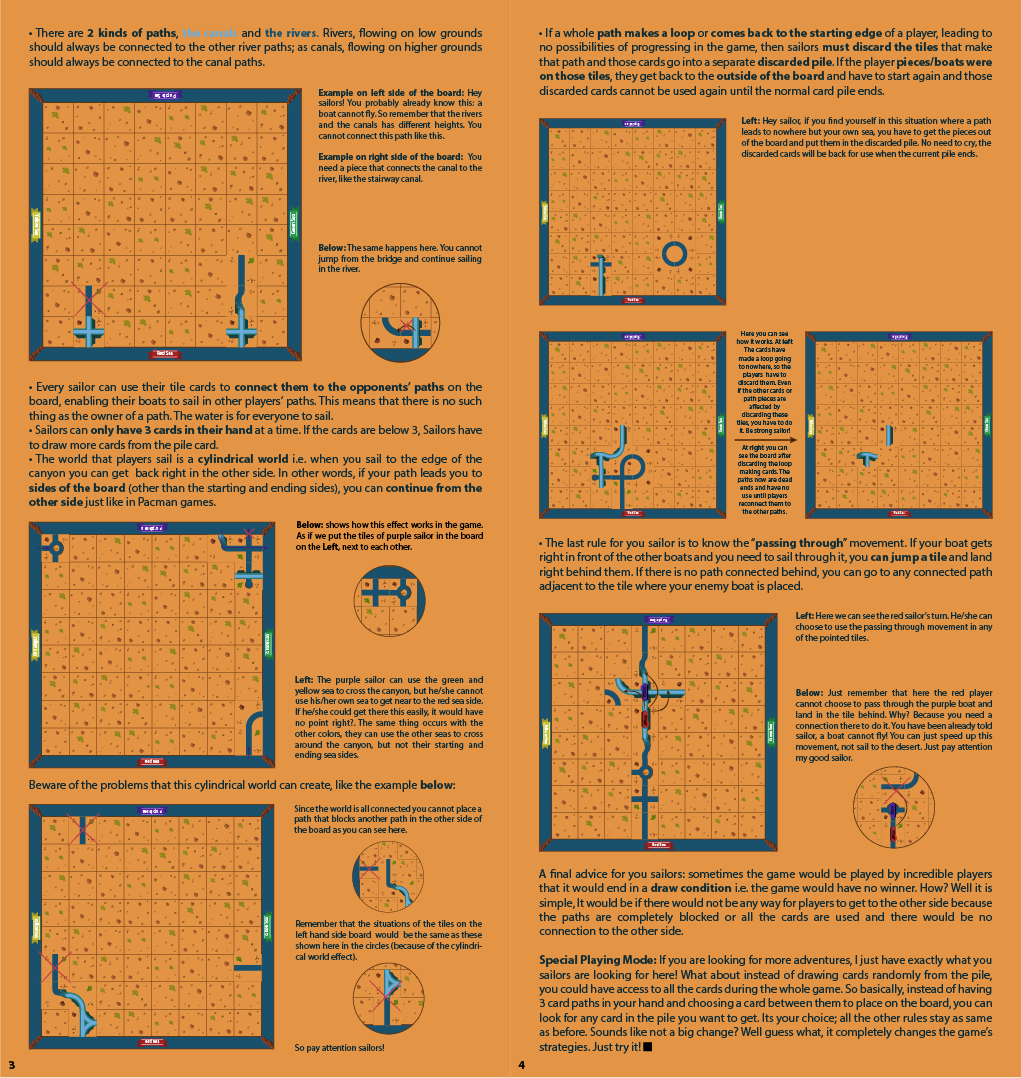This is a colaborative project developed in 5 weeks between Arya Bakhsheshi and Leonardo Sandim.
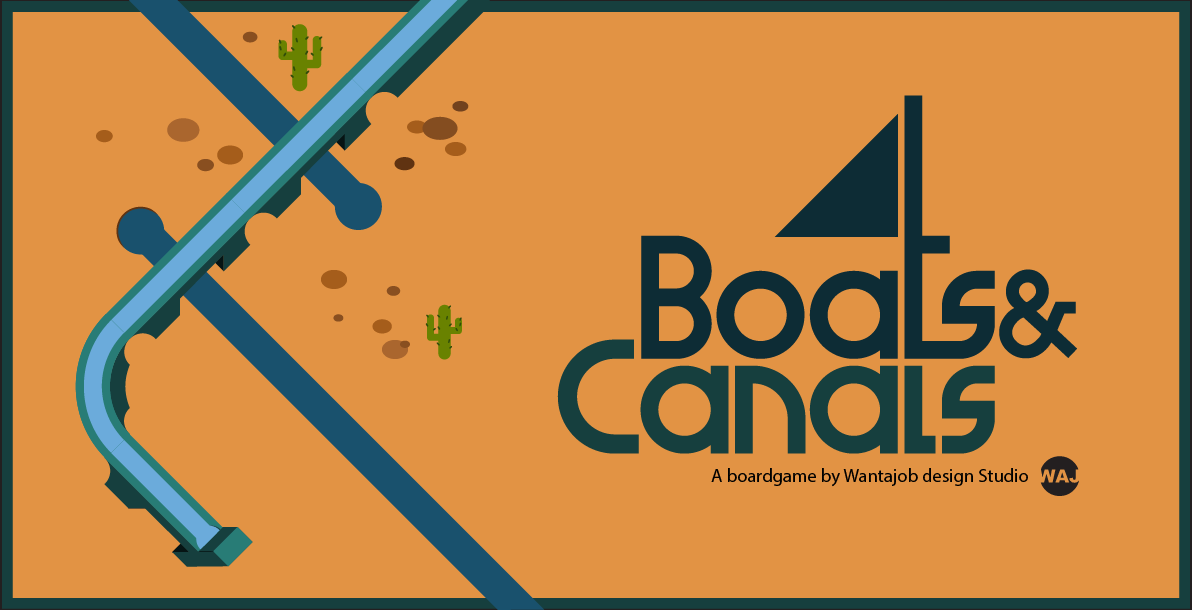
In Boats & Canals, you are a merchant boat trying to reach the other side of a dry canyon. The only way is to build your water path through this desert land.
It can be played between 2 or 4 players and it has 2 different modes of game.
The core of the game seems to be simple, but the variety of connections and different pieces that the tile cards can make adds deepness to the strategy; in general it is all about outplaying your opponents.

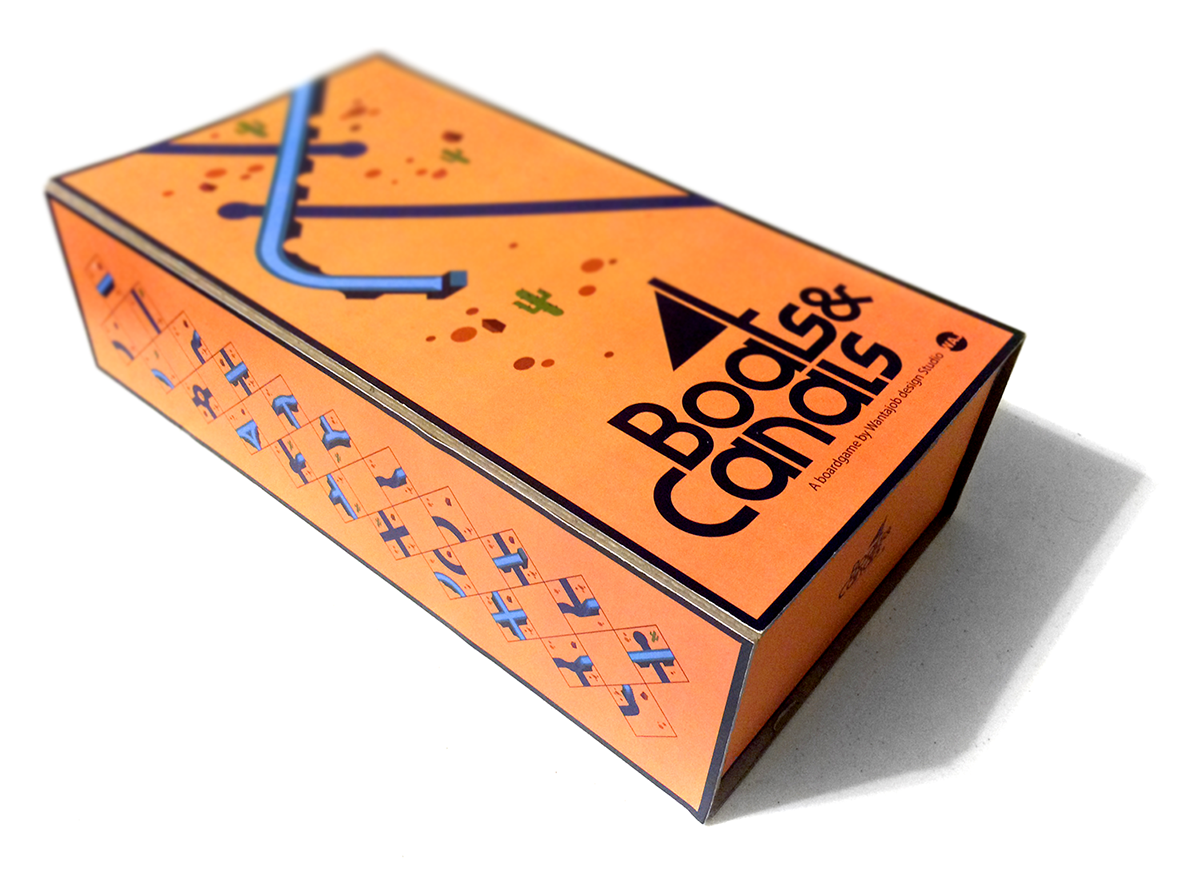
The packaging of the board game has a matchbox style. All variations of canals can be seen on one of the sides.
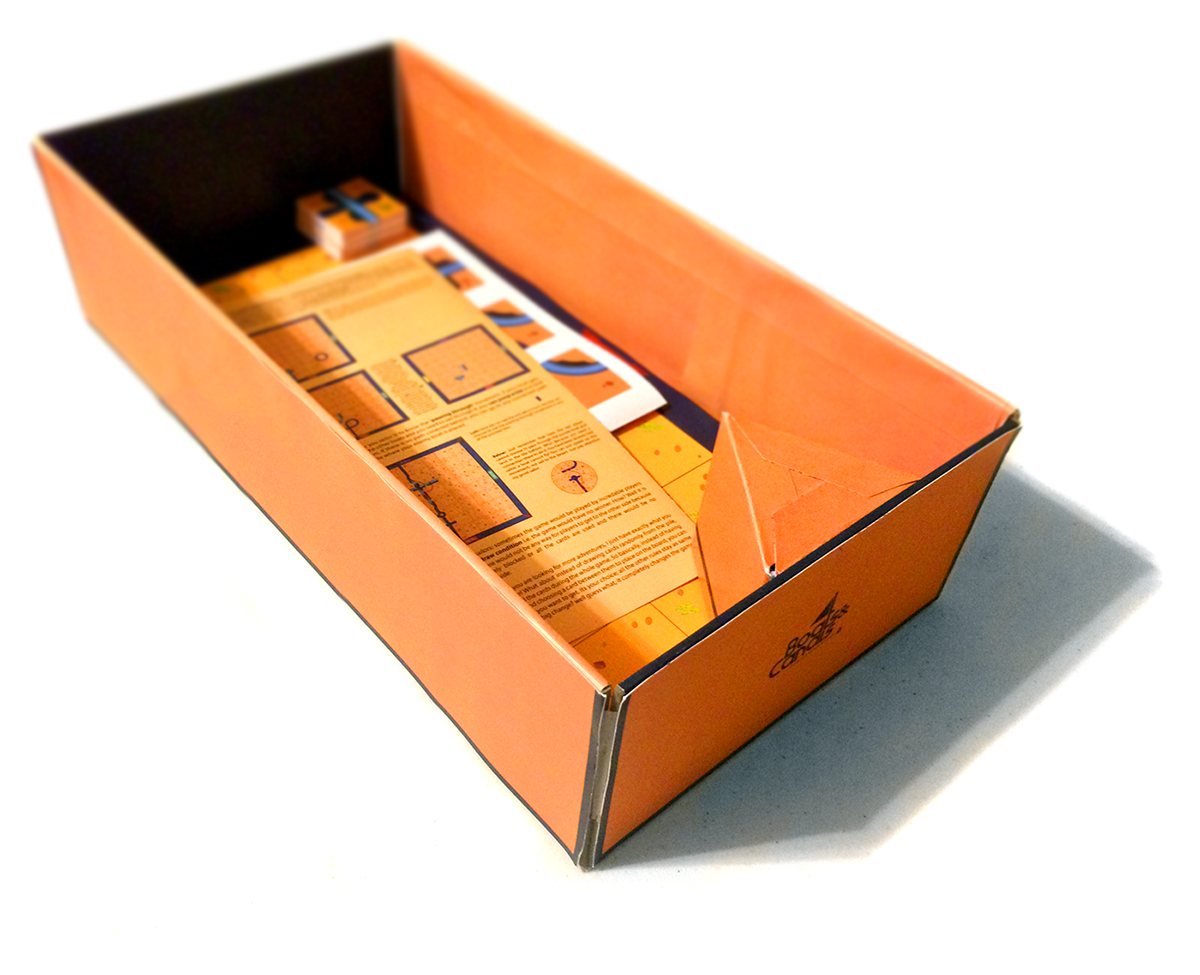
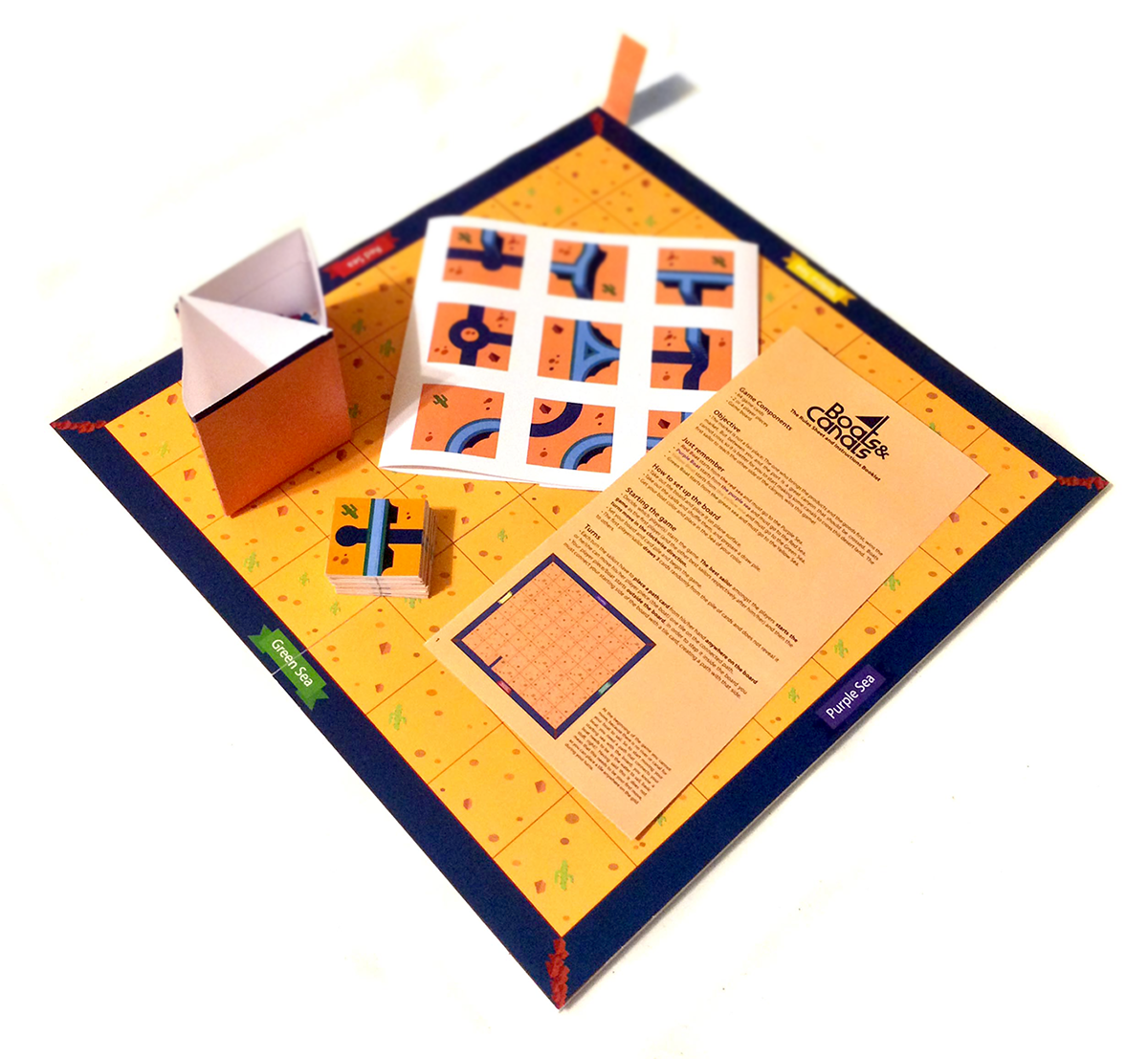
All the contents inside the box are including: the 8 x 8 game board or grid, the Boats and Canals rules sheet, the tile cards variations reference sheet and a triangular box that contains the pieces of the boats and logs.
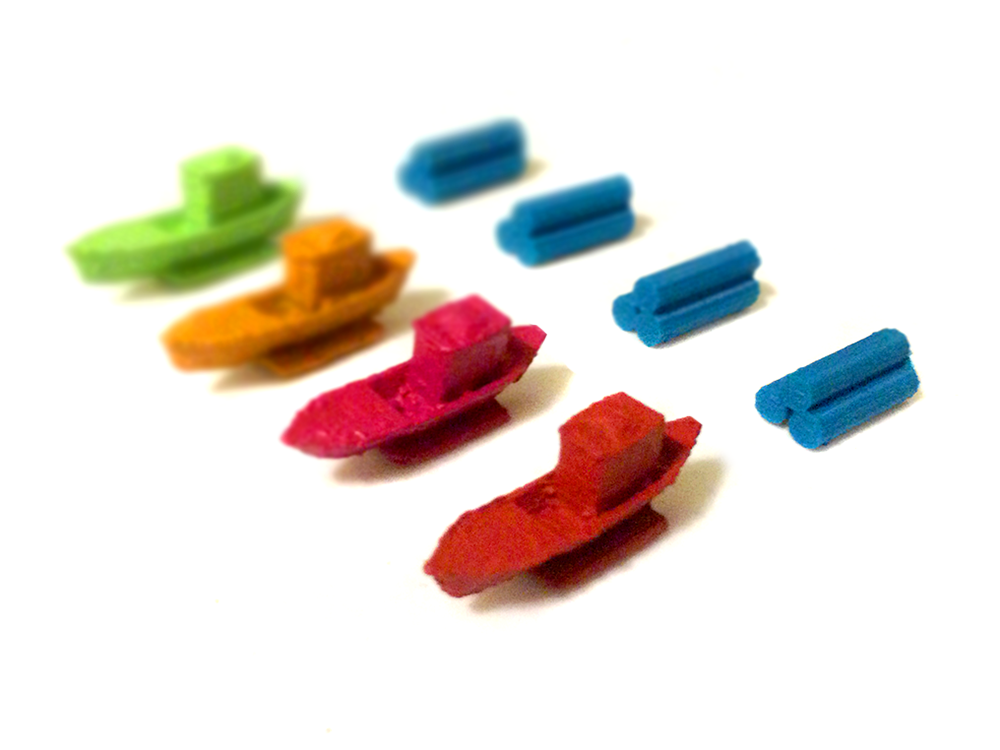
All 4 different boats for each player have been 3d printed and colored after. The 4 blocking log pieces have also been 3d printed.

To develop the game we wanted a system that the player's choice has more impact on the game than lucky numbers in a dice. A systme in which every movement of a player would change the board and ask for a reaction of the opponent player. We wanted something similar to the idea of Chess, but with a simple system like Checkers. Thinking in this scope, our concept came inspired in the Quoridor game by Gigamic. We kept the objective of moving a pawn from one side of the board to another, but we added the mechanic where the player must create his/her own path using the pieces of the game. To add complexity to the design, we created two kinds of paths; one low ground and the other, high ground. The main rule to place the path card is that it cannot block other path cards directly. If you are placing a path card adjacent to other path it must connect to the other path correctly.

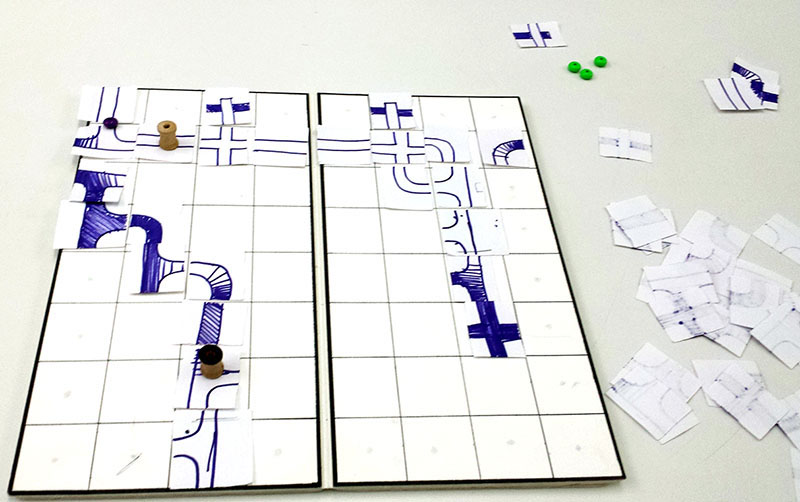
Above you can see an image from one of our play-test sessions after we were confident of our game concept. We tried different game modes and variations of gameplay based on the concept and the designed cards/tiles. Rough sketeches of the tiles helped us to determine better solutions to found issues in first phases sooner and also provided us with the ability to do iterations more efficiently and more rapidly.
After developing the concept of the game and running enough playtest sessions to make sure that the core of the game is solid and the gameplay is actually working with already designed rules, we started to design the path cards. After many tests we chose to use the same number of tiles in the game board grid, which is 64 (8 x 8). Then we balanced the path cards based on utility and control that each card give to the player. Simple cards like 1 straight path of low or high ground, repeat more than cards with 3 or 4 different connections. This number decreases even more when the path card can connect a high ground path to a low ground path. So, strong cards that have more impact in the strategy has a smaller chance to appear or to be used.
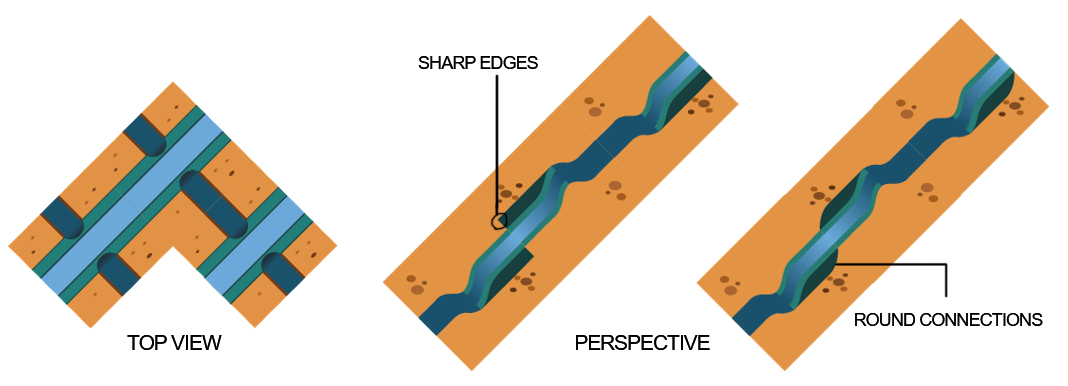
The graphic design of the path cards was a challenge. We started to try a top view, since it was the same one that we had used in our paper prototype. Soon we realized that this would not have the same impact of a perspective view where we can better represent the high and low paths. Then we found that the main problem to solve was the connection between each path that had to be continuous, while keeping structural aspect.
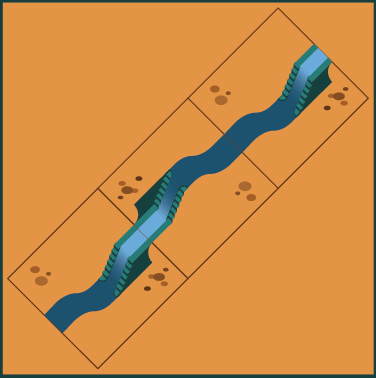
The chosen graphic style for path tiles was the one with curvy connections that reminds you the arcs of a bridge; this way we kept the visual structure and solidity while having smooth tile connections.

This is a summary of how to play the game:

For the details you can check the rules of the game below:
